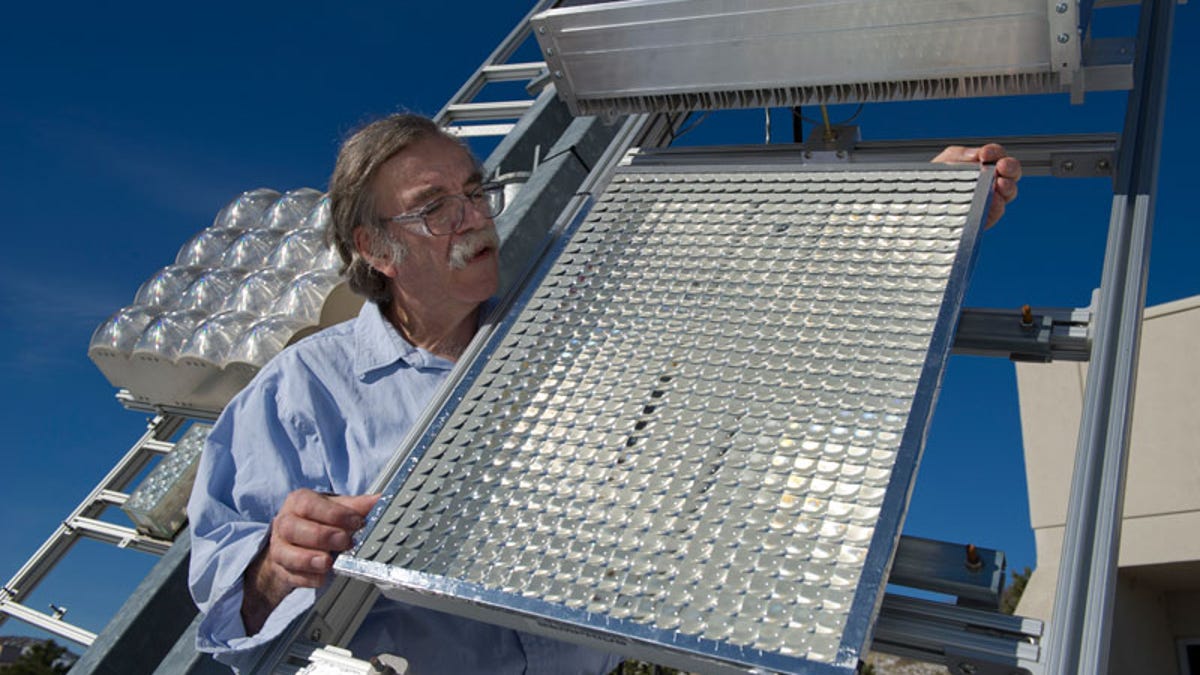Solar startups set new power records
Startups Alta Devices and Semprius boast new solar efficiency records using very different techniques in an effort to knock down the price of solar power.

If solar startups Alta Devices and Semprius were in the server business, one would be developing a deluxe high-powered server while the other would be stringing thousands of Linux boxes together. Both approaches, though, are showing promise at bringing the cost of solar power down.
Alta Devices today said it set the record for the most efficient solar cell, able to convert 23.5 percent of sunlight into electricity. The University of California at Berkeley spin-out said the efficiency mark, verified by the National Renewable Energy Laboratory, is a step toward commercializing its novel solar technology.
The company is making solar cells from gallium arsenide, a very efficient material typically used on high-end concentrating photovoltaic collectors or solar panels in space. The difference is that Alta Devices has developed a manufacturing technique to make extremely thin cells only one micron thick. A strand of human hair is about 40 microns to 50 microns wide.
By creating very thin solar cell slices, Alta Devices expects it can make solar panels cheaper than traditional silicon cells or other thin-film technologies. Gallium arsenide also generates electricity well at very high temperatures or low light, which improves its year-round performance.
"Our goal is to optimize the production economics of solar so that it is competitive with fossil fuels without subsidies, leading to broad adoption of solar generated electricity," Alta Devices president Christopher Norris said in a statement.
Last summer, the company came out of stealth mode by presenting a technical paper at a photovoltaic conference that predicted improving performance over time as high as 28 percent. The industry-leading polycrystalline silicon panels have efficiency of 20 percent or more while commercial thin-film cadmium telluride or CIGS cells are closer to 12 percent.
Boosting the efficiency of individual solar cells, which are wired together and assembled into a solar panel, is one of the most important levers manufacturers have for lowering the cost of solar power.
But another solar startup, Semprius, is taking a completely different tack with a design that uses thousands of dot-size solar cells in a collector that concentrates sunlight.
The company last week said that its solar modules, or panels, were tested at converting 33.9 percent of sunlight to electricity. Semprius was able to get that module-level performance with a combination of optics to concentrate light and a low-cost manufacturing solar cell printing process.
Solar "microcells" the size of a pencil point are stamped onto a substrate using a robotic production process in three layers. Then lenses concentrate light 1,000 times onto the gallium arsenide cells.
Solar concentrators such as these work in very sunny areas, such as deserts, and use mounting systems that track the sun during the course of the day to optimize the light angle. Energy giant Siemens last year invested in Semprius, which will aid the company in getting its products to market as banks are typically reluctant to finance new energy technologies. It expects to start manufacturing its solar collectors, aimed at solar energy project developers, in a North Carolina pilot plant in the second half of this year.
Updated at 11:42 a.m. PT with clarification on silicon cell efficiency.

